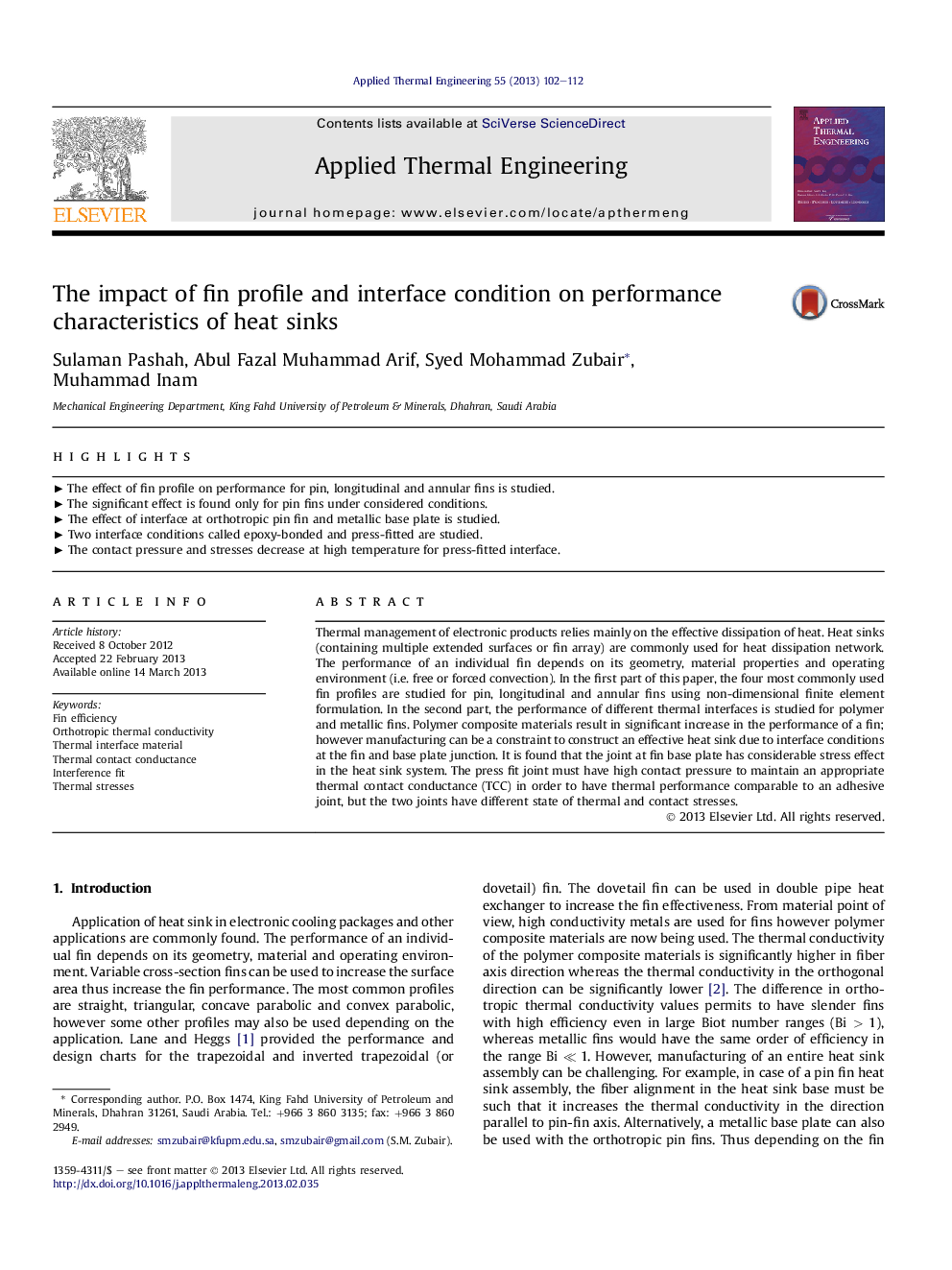| Article ID | Journal | Published Year | Pages | File Type |
|---|---|---|---|---|
| 646946 | Applied Thermal Engineering | 2013 | 11 Pages |
Thermal management of electronic products relies mainly on the effective dissipation of heat. Heat sinks (containing multiple extended surfaces or fin array) are commonly used for heat dissipation network. The performance of an individual fin depends on its geometry, material properties and operating environment (i.e. free or forced convection). In the first part of this paper, the four most commonly used fin profiles are studied for pin, longitudinal and annular fins using non-dimensional finite element formulation. In the second part, the performance of different thermal interfaces is studied for polymer and metallic fins. Polymer composite materials result in significant increase in the performance of a fin; however manufacturing can be a constraint to construct an effective heat sink due to interface conditions at the fin and base plate junction. It is found that the joint at fin base plate has considerable stress effect in the heat sink system. The press fit joint must have high contact pressure to maintain an appropriate thermal contact conductance (TCC) in order to have thermal performance comparable to an adhesive joint, but the two joints have different state of thermal and contact stresses.
► The effect of fin profile on performance for pin, longitudinal and annular fins is studied. ► The significant effect is found only for pin fins under considered conditions. ► The effect of interface at orthotropic pin fin and metallic base plate is studied. ► Two interface conditions called epoxy-bonded and press-fitted are studied. ► The contact pressure and stresses decrease at high temperature for press-fitted interface.
